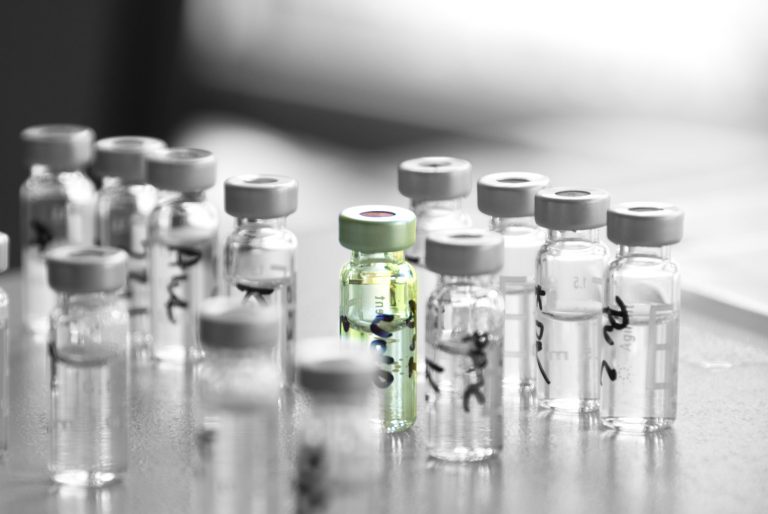
The U.S. Centers for Disease Control and Prevention (CDC) and the FDA have recommended that U.S. states pause administration of Johnson & Johnson’s Janssen COVID-19 Vaccine Candidate to give the agencies time to review six reported cases of patients developing what they termed rare and severe blood clots after receiving the vaccine.
The CDC’s Advisory Committee on Immunization Practices (ACIP) will meet Wednesday to review the cases and assess their potential significance. The has FDA planned its own investigation and will also review the CDC’s analysis, the agencies said this morning in a joint statement.
“Until that process is complete, we are recommending a pause in the use of this vaccine out of an abundance of caution,” the agencies said, in a statement by Peter Marks, MD, Ph.D., director of the FDA’s Center for Biologics Evaluation and Research and Anne Schuchat, M.D. Principal Deputy Director of the CDC and a retired rear admiral with the U.S. Public Health Service.
“Right now, these adverse events appear to be extremely rare,” Marks and Schuchat added. “COVID-19 vaccine safety is a top priority for the federal government, and we take all reports of health problems following COVID-19 vaccination very seriously.”
Janssen COVID-19 Vaccine Candidate is an adenovirus vector vaccine based on constructs created and tested by J&J with Beth Israel Deaconess Medical Center (BIDMC), part of Harvard Medical School, using Janssen’s AdVac and PER.C6 vaccine technology platforms. AdVac can be used with Janssen’s PER.C6 technology to develop recombinant vaccines against infectious diseases.
In the six cases being reviewed by the FDA and CDC, a cerebral venous sinus thrombosis (CVST) was seen in combination with low levels of blood platelets. All six cases occurred among women between ages 18-48, with the symptoms occurring 6 to 13 days after vaccination.
Treatment of CVST differs from typical treatment for blood clots, which would usually involve administration of heparin—an option that may be dangerous” in these cases, requiring the use of alternative treatments, the FDA and CDC cautioned.
The FDA and CDC urged J&J vaccine recipients who develop severe headache, abdominal pain, leg pain, or shortness of breath within three weeks after vaccination to contact their healthcare provider—who in turn were asked to report adverse events to the Vaccine Adverse Event Reporting System.
It was not known if the six cases include any of the cases that last week led to a pause in the “Vaccines for All” mass vaccination event at Dick’s Sporting Goods Park in Commerce City, CO, hosted with the state of Colorado. Eleven patients experienced adverse reactions to the Janssen COVID-19 Vaccine Candidate. Two of the 11 were transported to nearby hospitals “out of an abundance of caution” after medical staffers concluded they required additional observation, Centura said in a statement.
The J&J vaccine received emergency use authorization from the FDA for protection from COVID-19 on February 27—a day after all 22 members of the agency’s Vaccines and Related Biologic Products Advisory Committee (VRBPAC) unanimously recommended emergency authorization of the J&J vaccine. On February 24, the FDA’s staff recommended agency approval of the Janssen COVID-19 Vaccine Candidate in a briefing document released two days in advance of VRBPAC’s meeting.
The blood clot type seen in the six cases is similar to that seen in relatively small numbers of patients treated with another COVID-19 vaccine, AstraZeneca’s AZD1222. Last week, the European Medicines Agency (EMA) and the U.K. Medicines and Healthcare products Regulatory Agency both requested updates to the prescribing labels of COVID-19 Vaccine AstraZeneca, known in the EU as Vaxzevria, that include blood clots as an extremely rare potential side effect, following separate reviews.
The EMA received reports of 169 cases of CVST and 53 cases of splanchnic vein thrombosis as of April 4. An EMA safety committee reviewed in depth 62 cases of CVST and 24 cases of splanchnic vein thrombosis reported in the EU drug safety database (EudraVigilance) as of March 22, 18 of which were fatal.
The MHRA said it reviewed 79 cases (51 women, 28 men) of blood clots in the U.K. as of March 31—44 of the 79 cases were of CVST with thrombocytopenia; the other 35 were of thrombosis in other major veins with thrombocytopenia. The 79 cases resulted in 19 deaths (13 women, six men)—14 from CVST with thrombocytopenia; five from thrombosis with thrombocytopenia.













